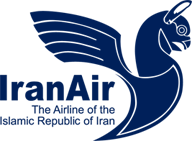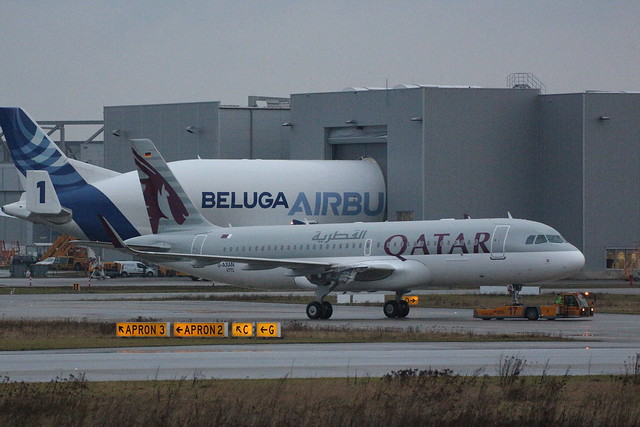Leeham News and Analysis
There's more to real news than a news release.
Brexit special: analyst reaction
June 27, 2016: Aerospace and airline analysts are reacting to Thursday’s vote in Britain to leave the European Union. Below is a synopsis of some of the analyst notes we receive.
Credit Suisse
We are forwarding the analysis our European Transports team put out this morning on Brexit and have a few observations as it relates to US Airlines.
- GBP Exposure: For the US network carriers (UAL, DAL, AAL), GBP exposure averages ~2-3% of total revenues with overall UK exposed revenues ranging 4-6%.
- Impact to High Yield Transatlantic Traffic Primary Concern: For US network carriers, we see the primary concerns post-Brexit on the demand implications on the Transatlantic. Last week IAG issued a profit warning which worries us on corporate demand weakness. Given scheduled seat growth in the Transatlantic continues to outpace demand (H2 seat growth US-EU scheduled at 8.6%), capacity cuts are needed to stabilize pricing particularly since UK GDP is likely to slow even further. We look to Q2 earnings calls next month for additional color from carriers.
- AAL Viewed Most at Risk Given Partnership with IAG, but Our Team Believes IAG is Least at Risk [among EU airlines] from Future UK-EU Air Service Negotiations: Our European analyst believes IAG’s airlines would see limited effect from the UK exiting the EU Open Skies agreement as long as renegotiated UK-EU bilaterals do not limit service levels. This suggests that AAL’s relative underperformance was overdone on Friday; however, we expect Brexit-related uncertainty to continue to weigh on network carriers, and reiterate our confidence in domestic carriers (Outperform on LUV & SAVE).
Pontifications: Time to calm down from last week’s news cycle
June 27, 2016, © Leeham Co.: Last week turned out to be one of the busiest in aviation in quite some time.
- Details of the Iran Air Boeing “order” emerged. Everyone overlooks that this is really a “Memorandum of Agreement,” which is subject to who-knows-how-many contingencies.
- Frothing occurred over news that Volga Dnepr (Air Bridge Cargo) may firm up 10 orders for the 747-8F, an MOU announced at the Paris Air Show last year, at this year’s Farnborough Air Show. This, along with the Iran Air “deal,” was viewed as savior for the 777 Classic and 747-8 lines. Not so fast.
- Southwest Airlines announced it’s deferring 67 Boeing 737 MAX deliveries until well into the next decade. This prompted some to claim this is a harbinger of bad things to come for Boeing.
- Brexit was viewed as a disaster for the global economy, Airbus, Boeing, Europe’s airlines and all mankind.
As you can see from my sarcasm, I disagree with each of these. Here’s why.
Iran Air, Volga Dnepr deals help Boeing production gaps but don’t solve them
Subscription Required
Introduction
 June 24, 2016, (c) Leeham Co.: Boeing’s recent deal with Iran Air for 100 737s, 777s and 747s and its indication that a Memorandum of Understanding with Volga Dnepr may be firmed up will help fill production gaps on the 777 Classic and 747-8 lines. But these transactions won’t fully fill the gaps.
June 24, 2016, (c) Leeham Co.: Boeing’s recent deal with Iran Air for 100 737s, 777s and 747s and its indication that a Memorandum of Understanding with Volga Dnepr may be firmed up will help fill production gaps on the 777 Classic and 747-8 lines. But these transactions won’t fully fill the gaps.
Boeing declined to detail the breakdown of its order–which is still subject to US government approval–but Reuters and The Wall Street Journal obtained the detailed list.
The Volga Dnepr MOU was announced last year at the Paris Air Show for up to 20 747-8Fs. This month, news emerged that this MOU appears to be firming up for 10 plus options or commitments. This contract may be announced at the Farnborough Air Show.
Summary
- Iran Air deal includes four 747-8s and 15 777-300ERs. Helpful, but not enough to fill the production gaps.
- Volga’s firming of 10 orders is helpful for the 747-8, but even at a reduced production rate of six airplanes per year, a significant gap remains.
Bjorn’s Corner: Asia-Pacific Air Traffic Management
 June 24 2016, ©. Leeham Co: Having covered the Air Traffic Management challenges in North America, Europe and Middle East we will now finish the series by looking at some specific problems affecting the Asia-Pacific region.
June 24 2016, ©. Leeham Co: Having covered the Air Traffic Management challenges in North America, Europe and Middle East we will now finish the series by looking at some specific problems affecting the Asia-Pacific region.
Asia-Pacific is the world region with the strongest growth in air traffic. IATA calculates that within 20 years half of the world’s air travel will originate or terminate within the region. Figure 1 shows that air traffic has several hot spots in Asia-Pacific, but also that there are areas with rather moderate traffic.

Figure 1. Air traffic’s main routes in the world. Asia-Pacific is an area with large differences in air traffic intensity. Source: Rockwell Collins
The region has its unique set of Air Traffic Management problems. We will now cover those that must be solved, should the region’s Air Navigation Service Providers (ANSPs) be able to manage the forecasted growth in air travel in a safe way. Read more
Fuel prices rising, muted wide-body demand noted by analysts

Oil prices are rising and catching the attention of airline and aerospace analysts. Photo via Google images.
June 22, 2016: Our weekly synopsis of select analyst notes point to increasing fuel costs and weak wide-body demand, among other things, as issues to consider.
Highlights:
- A350 deliveries at risk due to Zodiac supplier issues. (Buckingham.)
- US airline stock is under pressure due to rising fuel prices. (Cowen & Co.)
- Stock for supplier Crane is rising due in part to rising oil prices. (CanaccordGenuity.)
- Global traffic growing at a slower rate than forecast. Wide-body demand muted. (JP Morgan.)
- Production rate increases at Boeing may be challenging. (Wells Fargo.)
Bjorn’s Corner: The Middle East Air Traffic Management
June 17 2016, ©. Leeham Co: Having covered the Air Traffic Management challenges that are present in the North American and European airspaces, we will now put the light on another air traffic hot spot, the Middle East.
Figure 1 show that air traffic is more intense over the US and Europe airspaces but that there are main crossroads to Asia and Africa that take their route over the Middle East, and the area has hot spots.

Figure 1. Air traffic’s main routes in the world. Middle East is an area with hot spots. Source: Rockwell Collins
As we have seen, the technical solutions are well on their way to enable the implementation of a modern and efficient Air Traffic Management. Both the US and European air space modernization is hinging on how well the human factors change process can be accomplished (in the US budgets are also a hindrance).
If we add political factors to the jam, we have a good description of the situation in the Middle East. Read more
Thinking outside the box at Pratt & Whitney
June 16, 2016, © Leeham Co.: “I’m working on six or eight engines. The more the better.”
![]() This startling statement comes from Alan Epstein, vice president of technology and the environment for Pratt & Whitney.
This startling statement comes from Alan Epstein, vice president of technology and the environment for Pratt & Whitney.
It runs counter to everything the airline industry has believed since the introduction of the twin-engine Boeing 767 was qualified for ETOPS in the early 1980s: fewer engines are better.
Epstein explained his statement during an interview with LNC at the United Technologies Media Days last week in Hartford (CT).
Epstein last year at the same event told LNC he was looking at four-engine technology for future airplanes. We asked him this year if he was still looking at four engines. That’s when he said he was looking at six.
It’s his job to think outside the box. This one clearly qualifies.






